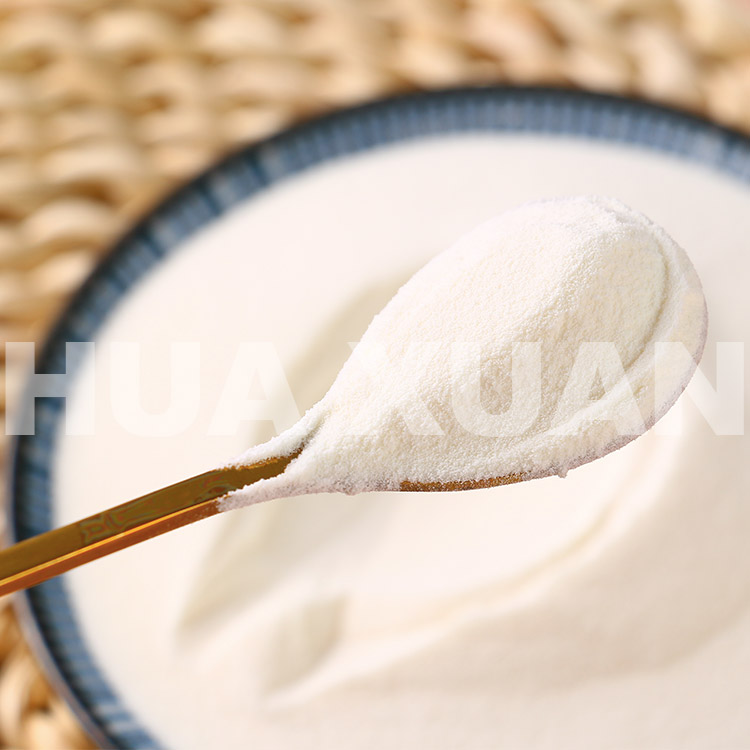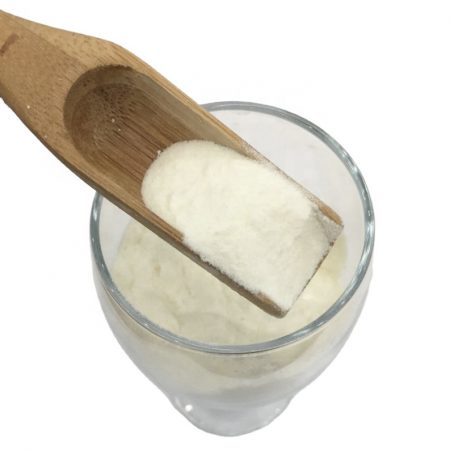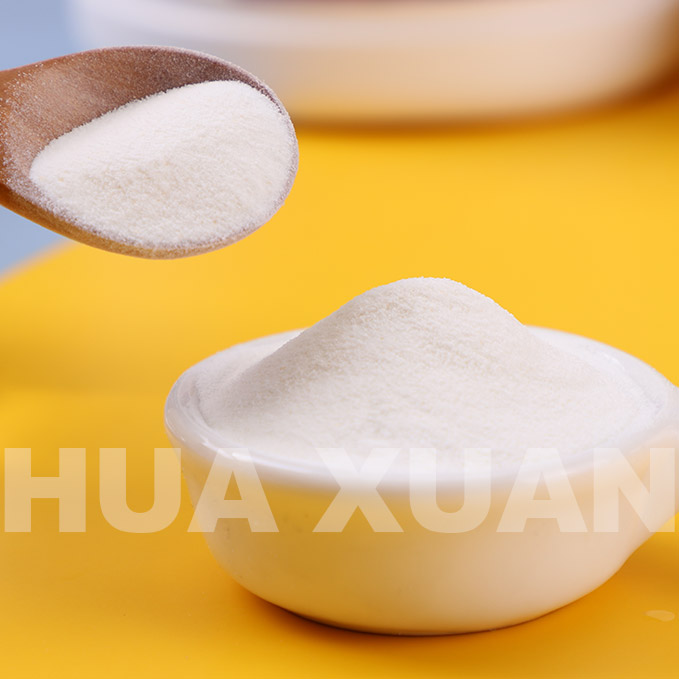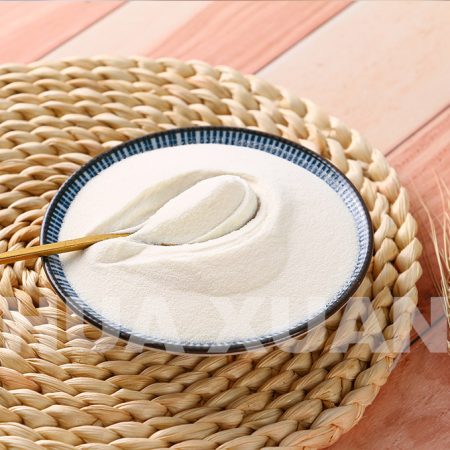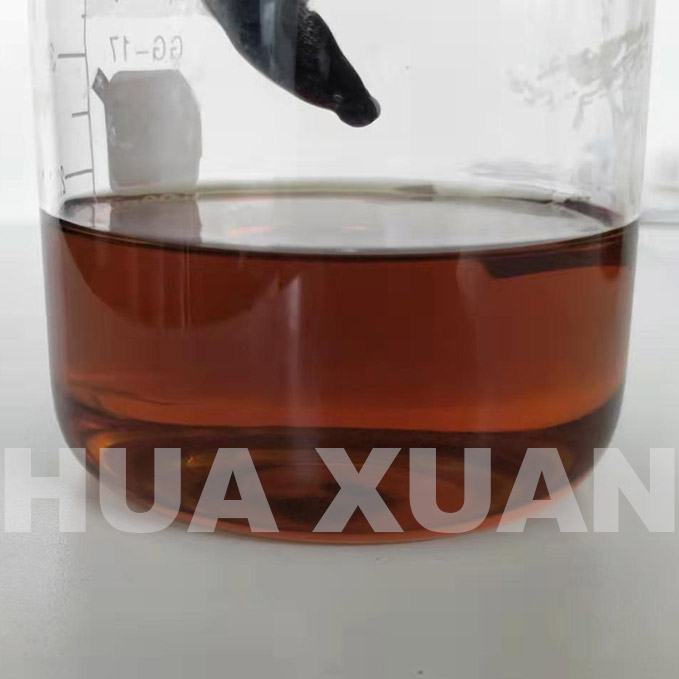
Odorless porcine collagen powder
We always use Odorless porcine collagen powder in our diets. It helps our body healthy and bones growth better. So we can to study some tips about porcine collagen.
Our common specifications
| Items | Specifications | Results |
| Appearance | White Powder | White Powder |
| Assay | ≥99% | 99.6% |
| Odor | None | None |
| Loose Density(g/ml) | ≥0.2 | 0.26 |
| Loss on Drying | ≤8.0% | 4.51% |
| Residue on Ignition | ≤2.0% | 0.32% |
| PH | 5.0-7.5 | 6.3 |
| Average molecular weight | <1000 | 890 |
| Heavy Metals(Pb) | ≤1PPM | Pass |
| As | ≤0.5PPM | Pass |
| Hg | ≤1PPM | Pass |
| Bacterial Count | ≤1000cfu/g | Pass |
| Colon Bacillus | ≤30MPN/100g | Pass |
| Yeast & Mold | ≤50cfu/g | Pass |
| Pathogenic Bacteria | Negative | Negative |
| Conclusion: Conform with specification. | ||
| Storage: Store in cool & dry place. Keep away from strong light and heat. | ||
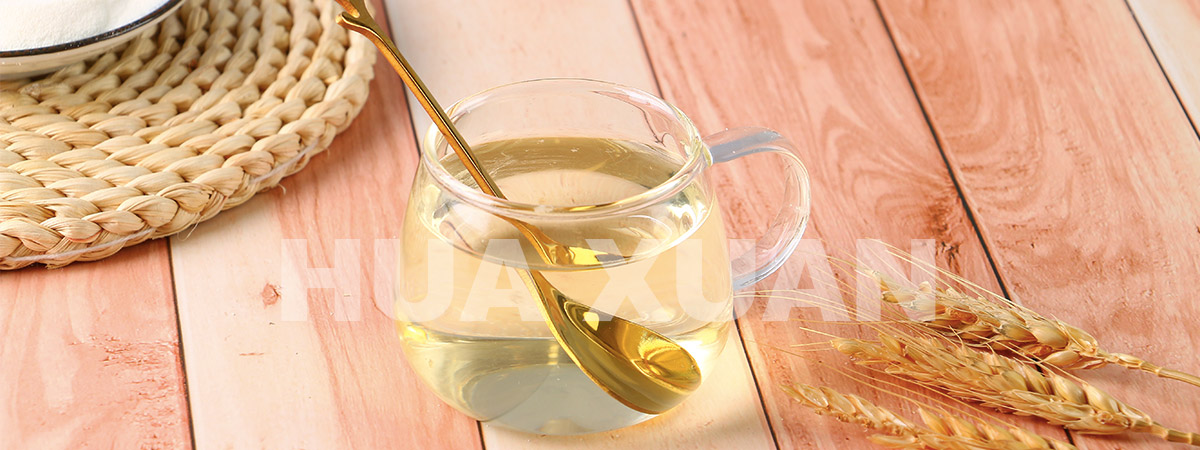
The usage and application of porcine collagen powder
Odorless porcine collagen powder is absorbable. This means it can be broken down, transformed and absorbed back into the body. It can also become compacted solid bodys or lattice-like gels.
Porcine collagen is Skin fillers
Collagen injections can improve the contour of the skin and fill in depressions. Fillers containing collagen can be used to remove fine lines and wrinkles on the face. It can also improve scars, as long as these scars do not have sharp edges. These fillings come from humans and cows. Skin tests should be made before using porcines collagen to prevent aggravating any allergies. Collagen can fill the volume of the opposite surface. The wider gaps are usually filled with fat, silicone or implants.
Porcine collagen is Wound dressing
Porcine collagen can serve heal wounds by absorbing new skin cells to the wound place. It promotes healing and provides a platform for the growth of new tissues.
Collagen dressings can help heal: Chronic wounds that do not respond to other treatments ; Wounds that drain body fluids (such as urine or sweat) ; Granulation wound on which different tissues grow ; Necrotic or rotting wounds ; Local and full-thickness wounds ; Second degree burn ; Location of skin donation and skin transplantation.
Collagen dressings are not suggested for third-degree burns, wounds covered with dry eschar, or patients who may be sensitive to products from porcine.
Guide tissue regeneration
Collagen-based membranes have been used in periodontal and implant treatments to promote the growth of specific types of cells. In oral surgery, the collagen barrier prevents fast-growing cells around the gums from migrating to the tooth wound. This leaves room for tooth cells to have a chance to regenerate. In these cases, collagen-based membranes can help healing, and they are absorbable, so there is no need for surgical removal of this barrier after major surgery.
Porcine collagen provide Vascular prosthesis
Collagen tissue grafts have been used for surface nerve revive, vascular prosthesis and arterial rebuild. Although collagen prostheses are compatible with the human body, some have been found to form blood clots or may cause blood to clot.
Treatment of osteoarthritis
Collagen supplements or formulas may help treat osteoarthritis. A review found that supplements with a trusted source of collagen can help reduce pain symptoms and improve joint function in patients with osteoarthritis. When the supplement is absorbed, porcine collagen growth in the cartilage, which helps reconstruction the extracellular matrix. However, not all researchs agree these findings.
Porcine collagen help Skin revitalization
Many products have collagen, it help to revitalization the skin by increasing collagen standard in the body. However, this is impossible because the collagen molecules are too big to be absorbed through the skin. Any advantage may be because the moisturizing influence of these products. They do not directly increase collagen. This type of treatment is also not a medicine, so any claims about its efficacy do not need to be scientifically proven. It is recommended to be careful when using these products.
The Health benefits of body
Despite claims that collagen supplements can tighten the skin, fight age-related damage, promote bone health, and provide other benefits, few rigorous independent studies have tested the effects of these supplements. Many studies finding the benefits of porcine collagen supplements are small or limited in range. In addition, most of the research is funded by collagen suppliers.
It is also good to skin
Collagen accounts for 75% of the dry weight of the skin. As you get older, your skin’s inner layer will lose collagen, become less soft and more vulnerable. In a study, scientists evaluated whether supplements can increase the collagen density of skin tissue in a laboratory environment. Their results show that supplements can improve skin moisture and dermal collagen network, and may improve the characteristics of skin aging.
Other studies have investigated skin elasticity, which begins to decline in the 20s. At the end of the research, people who took porcine collagen had better skin elasticity than the people who took a placebo.
Finally, a research investigating porcine collagen assessed their influnce on wound healing and skin aging. The study authors concluded that these supplements are generally safe and can increase skin elasticity, moisture and density. However, they added that further research is needed to determine the appropriate dosage and study medical applications.
Collagen improve Bone health
It is not clear whether supplementing collagen can improve bone health. Researchers discovered that porine collagen supplements cannot to increase bone health in women. The results showed that collagen supplements had no effect on bone metabolism.
But a published study concluded that the intake of certain brands of collagen peptides can increase bone mineral density in postmenopausal women. In addition, supplementation is related to benefit shifts in bone markers, showing increased bone formation and lessen bone degradation.
Improve Body composition
Some people may eat porcine collagen to keep muscle mass or lessen fat mass. Research on this is limited and provides different results. A published study found whether porcine collagen combined with resistance training affects the body composition of active men. The researchers found that the muscle gains of the two groups were the same. However, the fat-free mass of people taking collagen supplements slightly increased, which is thought to be related to the improvement of connective tissue. Studies have found that taking hydrolyzed collagen supplements may help maintain lean body mass.
Reduce Joint pain
Collagen helps stimulate the production of cartilage-a rubber material that covers and protects bones and helps joints move smoothly. The production of collagen and cartilage decreases with age. There is evidence that collagen supplements can reduce joint pain and other symptoms of osteoarthritis. Collagen can effectively reduce stiffness associated with diseases. It is less effective in reducing pain and functional joint limitation.
Prevent heart disease
Some people eat porcine collagen to improve their heart health, although research think this benefit is limited. They found that when eat regularly for six months, collagen tripeptides help enhance cholesterol levels and lessen other risk factors for atherosclerosis.
The raw materials of porcine collagen powder manufacturer
Porcine collagen is a substance that can be found in pork skins and bones. It is basically glue that holds everything together and provides construction to the body. The highest density of collagen is found in connective tissue, bones and skin. This unprocessed collagen is often referred to as “natural collagen”.
Pork is one of the most popular meats in the world at present, About have 36% of the world’s meat intake. Porcine collagen comes from pigs, especially bones and skin. So whether you realize it or not, porcine collagen is an essential part of our diet. Although you may not have heard of porcine collagen, you may have heard of pork gelatin, a gelling agent commonly used in candies and jellies. This is extracted from Odorless porcine collagen powder.
If you’ve ever cooked ham or pork shoulder slowly in a stew or soup, you may have found that the liquid turns into jelly when it cools—this is basically gelatin. This gelatin is rich in porcine collagen peptides and has a higher nutrition than natural pork collagen. However, compared with pure collagen peptides, its digestibility is still lower.
Porcine collagen is a nutrient integrated into our history. Archaeological evidence shows that pigs are one of the earliest domesticated animals in human history, and this development may be the result of wild boar hunting. Therefore, when you consider the fact that porcine collagen is abstracted during the cooking process to make it more digestible, humans have been cooking pork for tens of thousands of years. It is safe to say that porcine collagen has become part of our diet. Our ancestors benefited greatly from the consumption of Odorless porcine collagen powder because it contributes to optimal joint and bone health, which provides them with the athletic ability needed to survive in the wild and build civilizations around the world.
The whole pig, including trotters, bones and connective tissue. All of contain high levels of collagen. These are boiled to form nutrient-rich broths and stews. Collagen makes broths and stews thick and smooth. It was found that it can extract collagen from thick soup and use it as an ingredient. Eventually this became into aspic, a delicious jelly, leading to the creation of all kinds of delicacies found in cuisines all over the world.
The production process of pork collagen
Porcine collagen is a rich in nutrients substance. It is a group of natural proteins found in pork, especially in the flesh and connective tissues. For food or nutritional purposes, collagen is broken down into gelatin, which can be further broken down into hydrolyzed collagen. Hydrolyzed collagen is a polypeptide complex made from denatured collagen or gelatin after further hydrolysis and molecular weight.
In the hydrolysate, the peptide bonds of the gelatin molecule are partially hydrolyzed, which intentionally reduces the molecular mass and molecular size. This will dissolve the porcine collagen in cold water not gel, but it still have surface active characteristics. The process of machining porcine collagen have demineralization, extraction of collagen into gelatin, enzymatic hydrolysis to obtain hydrolyzed collagen, ion exchange, filtration, evaporation, sterilization and final drying. However, research focused on the development of the hydrolyzed collagen process is still limited.
Since collagen is denatured to gelatin at high temperatures, the extraction procedure must be performed at 4°C, whether on ice or in a cold storage room. The general procedure for collagen extraction involves first obtaining a tissue specific to the type of collagen desired. Then clean these paper towels by rinsing in water to remove all traces of dirt. Subsequently, the fat and connective tissue are trimmed and the hair is removed. Next, the tissue is cut and put in a dilute sodium acetate solution to eliminate all soluble non-collagen proteins and polysaccharides.
Discard the supernatant and rinse the remaining sodium acetate from the tissue. The sample is then freeze-dried and then re-dissolved in acetic acid, which will only dissolve the collagen. Since the supernatant now contains the crude collagen solution, it must be dialyzed for further purification. Depending on the starting material, the obtained collagen solution will be a mixture of different types of collagen. Since the entire extraction process may take up to a month, it needs to be optimized to reduce the time spent. In order to achieve a shorter extraction procedure. Greatly shorten the time required for each step. Since the collagen extraction protocol is based on the solubility of collagen in various solvents, this protocol can be applied to all types of collagen.
In order to obtain different types of collagen, different starting materials must be used. Animal skins and tendons can be used. Because the content of these collagens in the tissues is very small. In addition, the purified collagen is expensive due to the cumbersome extraction process and intensive purification procedures. If clinically relevant amounts are required, this can make collagen very expensive. In addition, the collagen extraction methods of different companies are different, resulting in significant differences in the mechanical and chemical properties of the collagen, resulting in undesirable batch-to-batch differences.
Organic peptone powder
As a manufacturer of organic peptone powder, we have two production lines. Peptone powder.
Collagen Tripeptide (CTP)
This product should be sealed and shaded, avoid high temperature, and stored in a dry.
Type II Collagen
We are no strangers to collagen, and we will see it at any time in our daily lives.
Hydrolyzed Liquid Collagen
Liquid collagen is also called as liquid protein. There are two forms of industrial-grade collagen
